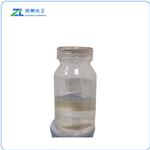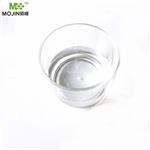4-Methylpentanoic acid has an unpleasant sour and penetrating
odor.
4-Methylpentanoic acid has an unpleasant, sour, penetrating odor.
Reported found in apple, roasted barley, beef, prefermented bread, Camembert cheese, Emmenthal cheese,
roasted cocoa beans, dry cured ham, hops, roasted pecans, rum, soybeans, black tea, wine, guava, papaya, strawberry fruit and jam,
baked potato, bell pepper, tomato, many cheeses, fish, beef, mutton, hop oil, mushrooms, mango, rice, sake, malt, wort, dried bonito
and mussels
Intermediate for plasticizers, pharmaceuticalsand perfumes.
4-Methylvaleric acid has been used in asymmetric synthesis of (4S)-4-isopropyl-3-[(2?S)-2?,4?-dimethyl-valeryl)]-2-oxazolidinone. It is a versatile building block used in the synthesis of various pharmaceutical and biologically active compounds, including inhibitors and antagonists. It is involved in the synthesis of novel series of high affinity, functionally potent antagonists of the CCR1 receptor.
4-Methylvaleric acid has been used in asymmetric synthesis of (4S)-4-isopropyl-3-[(2′S)-2′,4′-dimethyl-valeryl)]-2-oxazolidinone.
ChEBI: A methyl-branched fatty acid that is pentanoic acid with a methyl group substituent at position 4. It is a metabolite of 20 alpha-hydroxycholesterol
4-Methylvaleric acid, although identified in Nature, has found very little, if any, use in perfumes or flavors. It is mentioned mainly for the sake of completing the monographs on Methylpentanoic acids.
Conductimetric detection of 4-methylvaleric acid on unfunctionized polymethacrylate resin (TSKgel G3000PWXL) columns has been reported.



